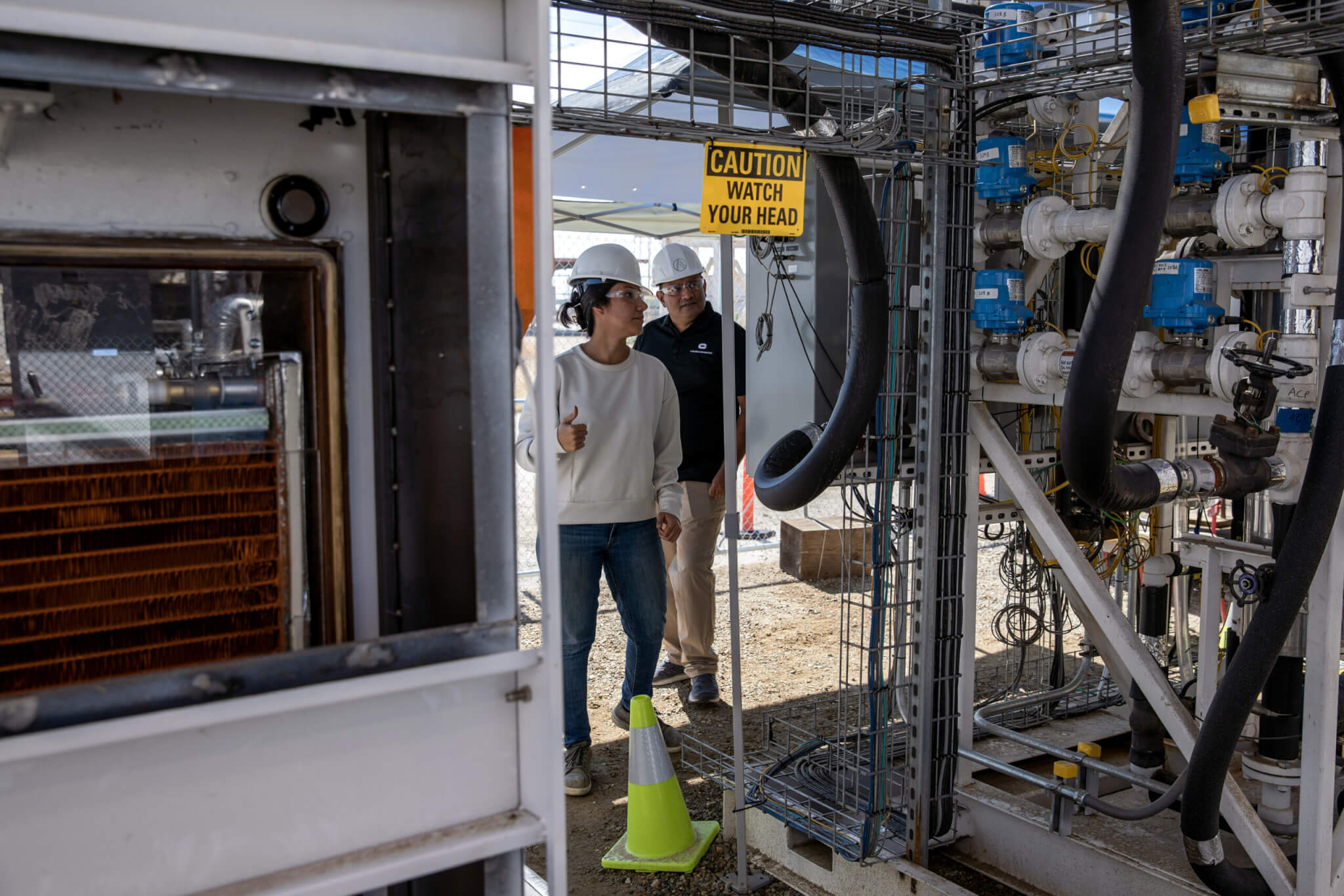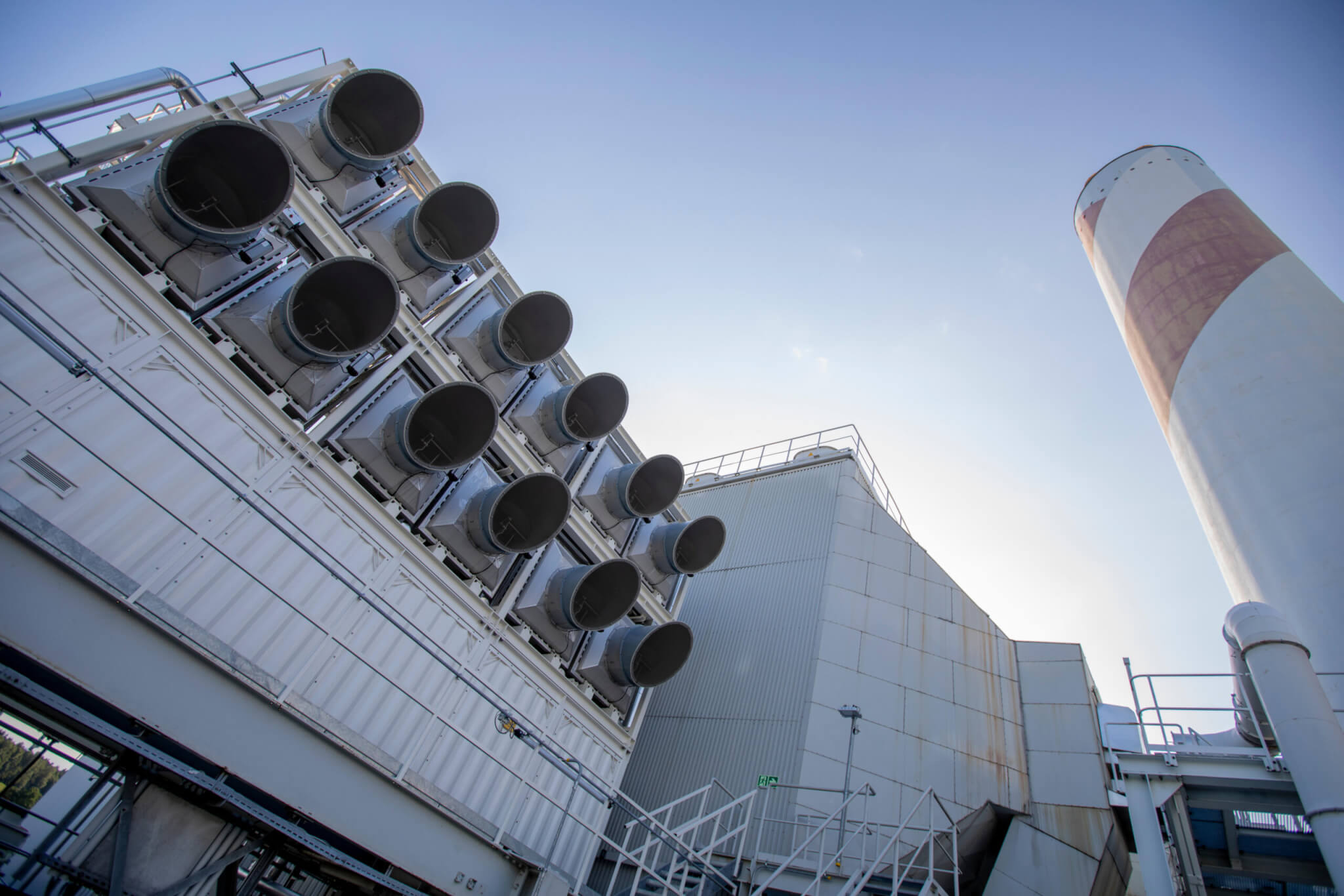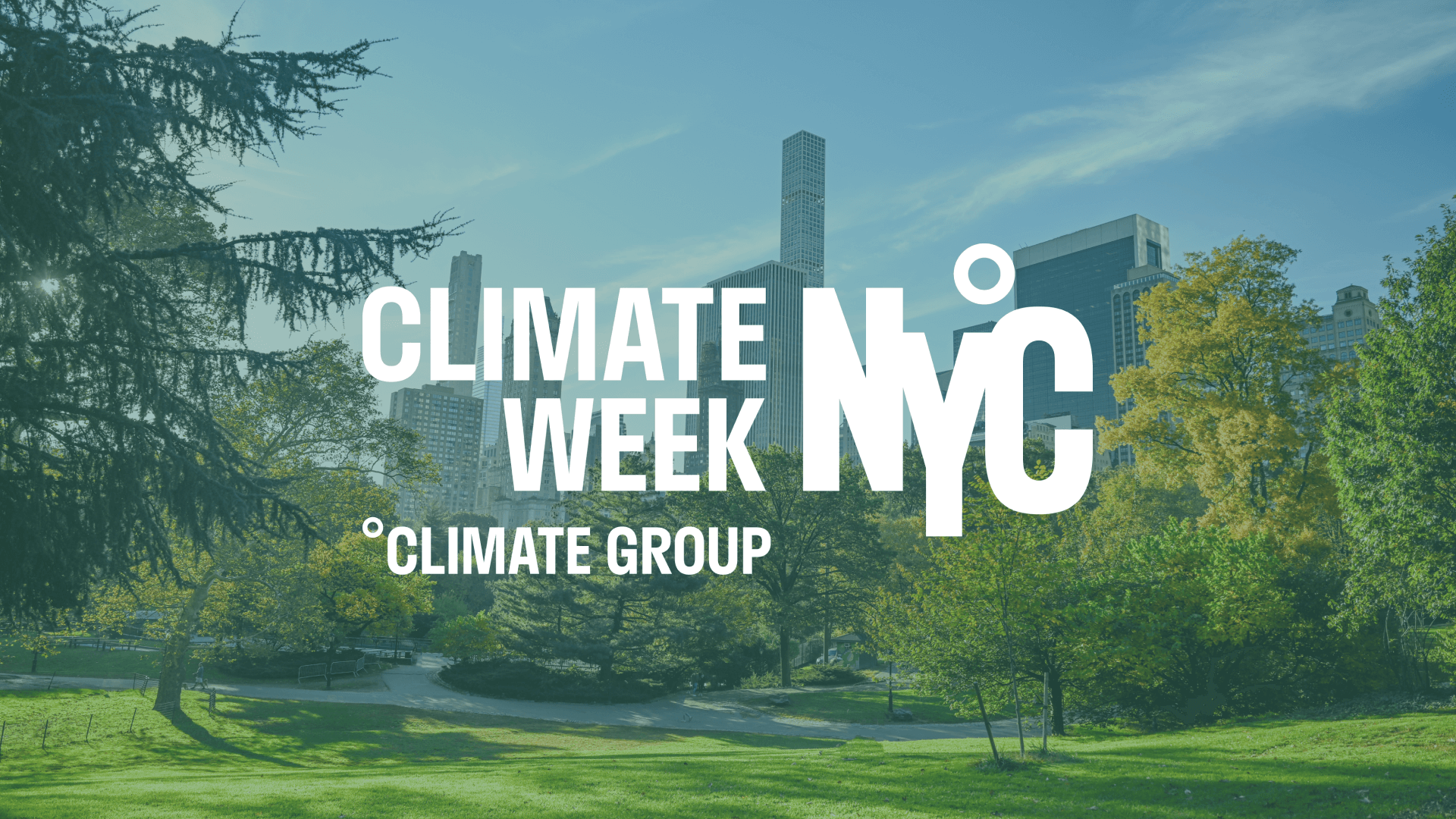
Direct air capture hubs can remove carbon dioxide from the atmosphere — and help advance a just transition toward greener jobs.
While reducing emissions is the most effective strategy to address climate change, the excess carbon dioxide that will remain in the atmosphere will need to be removed in parallel. Given that global emissions and temperatures have reached record highs, developing carbon dioxide removal (CDR) strategies now creates opportunities for removing vast amounts of carbon from the atmosphere, especially in the latter half of the century. CDR is critical for achieving the 1.5° C goals outlined in the Paris Agreement and reaching net-zero emissions by 2050 — provided that it does not extend a license to continue fossil fuel use.
To date, philanthropic funding for CDR has focused mostly on nature-based solutions like preparing forests, soils, and oceans to absorb carbon dioxide. While these are low-cost removal approaches that can scale right away, they cannot do the job alone. In addition to requiring vast amounts of land, nature-based solutions are increasingly vulnerable to climate change impacts.
Technological approaches such as direct air capture (DAC) — which uses fans to extract excess carbon dioxide from the air and then fuses it to rocks underground — can offer potentially more long-term solutions to complement nature-based strategies, and can withstand threats such as deforestation, wildfires, and tilling. In contrast to carbon capture and storage, DAC removes carbon dioxide from the air rather than at the emission source. In other words, DAC targets the carbon dioxide that will remain in the atmosphere even after emission reductions. Community-driven strategies are critical for helping ensure that DAC and other CDR efforts support decarbonization, benefit communities, and avoid replicating historic injustices.
Increasingly, emerging technology companies recognize the importance of accelerating carbon removal solutions. “We owe it to every climate vulnerable citizen to continue to deploy our technology at the urgent pace required to reach billion-ton scale and beyond in time to stop the worst of climate change,” shared Shashank Samala, co-founder of Heirloom, a DAC-focused company.
DAC hubs: A model for strategic investment
To ensure solutions like DAC are ready to scale by 2050, investors are beginning to fund them now, taking lessons from successful efforts to scale solar technology. Thanks to decades of strategic funding from the public and philanthropic sectors, the price of solar photovoltaic electricity dropped 89% between 2010 and 2022, and solar was the world’s fastest-growing source of electricity in 2023 for the 19th year in a row. A major catalyst for solar breakthroughs in the United States was the Obama administration’s creation of regional innovation hubs, which prioritized funding and incentives for utility-scale solar projects and accelerated green energy generation.
In an attempt to achieve similar successes for CDR, the Biden administration announced in 2022 a $3.7 billion investment to boost the industry in the United States. This investment supports the creation of regional hubs of CDR facilities, or “DAC hubs.” These hubs bring workers, engineers, communities, and other decision-makers together to drive continuous carbon removal innovation — all while advancing health and economic prosperity and working toward climate change mitigation goals. The funding has already unlocked an abundance of DAC research and development projects, building on years of foundational work supported by the public, private, and philanthropic sectors.
How philanthropy is helping scale DAC
Philanthropy has helped lay the groundwork for the growing public and private interest in a wide range of CDR approaches, including DAC. In 2018, ClimateWorks Foundation established its CDR program — the first coordinated approach from philanthropy to engage with environmental justice groups, policymakers, and advocates in scaling up CDR methods. “Together with our partners, ClimateWorks has had the opportunity to help build the field of CDR philanthropy — and to work on the responsible scaling of carbon dioxide removal solutions,” said Jan Mazurek, senior director for aviation and carbon dioxide removal at ClimateWorks.
Philanthropy has supported efforts to help ensure the just and equitable implementation of DAC hubs without the involvement of the oil industry.
Funders and leaders across industries have come together to help emerging strategies like DAC develop in a way that benefits people, supports decarbonization, and reduces reliance on oil companies — the group that has invested the most thus far in scaling DAC.
Philanthropy also supports the dissemination of research to public audiences, which can foster dialogue and build support for regionally appropriate and equitable CDR. One such example is the 2024 Roads to Removal report. Published by 13 research institutions and 68 subject matter experts, the report highlights regional opportunities for removing atmospheric carbon while producing environmental and socioeconomic benefits like improved air quality and well-paying jobs. Analyses like the Roads to Removal report will help to build momentum and community support for people-centered CDR solutions.
While funding for carbon dioxide removal has grown steadily since 2015, it remains a small fraction of overall foundation funding for climate change mitigation — about 5% of all climate philanthropic funding. From 2016 to 2020, annual foundation funding for carbon dioxide removal averaged around $50 million per year, according to ClimateWorks data. In 2021, foundation funding jumped to $155 million, the second-fastest growing sector that year. Since 2018, the majority of CDR funding has supported ecological strategies like forest restoration, with only about 14% of cumulative CDR funding going to technological solutions such as DAC.
Here are three ways philanthropy has supported efforts to scale direct air capture.
Sparking public and private investment by funding exploratory research
Philanthropy-supported research has helped seed public ambition, influencing policy and unlocking public funds. This has included funding research about the cost efficiency, feasibility, economic benefits, and associated risks of DAC technology. Additionally, philanthropy supported the development of research about CDR investment opportunities that has since informed recovery act legislation, including the the Infrastructure Investment and Jobs Act (IIJA) and the Inflation Reduction Act (IRA). The IIJA includes $3.7 billion for DAC hubs, nearly $260 million for DAC research, and $100 million for commercially viable CDR projects. A tax credit that implementing partners helped enshrine back in 2018 — amplified under the IRA — has spurred an additional $912 million in DAC investments, which will continue to grow thanks to recent enhancements.
Philanthropic support has also catalyzed private investment in DAC. For example, a ClimateWorks research grant helped Heirloom publish research that eventually helped to establish the first DAC facility in the United States. The facility runs entirely on renewable energy and was constructed with union labor. Additionally, Heirloom does not accept investment from oil and gas companies, which aligns with the company’s principles to center trust and equity. Meanwhile, Heirloom has adopted a community governance model in Tracy, California, where the facility has created a slew of green jobs. In 2023, Microsoft invested in Heirloom in one of the largest carbon dioxide removal deals to date.
ClimateWorks also supported the beginnings of private sector efforts to procure carbon removal. Today, the Frontier Fund, which began as a DAC buyer’s club supported by philanthropy, represents a $925 million commitment from companies like Meta, Shopify, Google, and Stripe to support carbon removal.

Advancing people-centered approaches to designing DAC projects
Philanthropy has supported efforts to help ensure the just and equitable implementation of DAC hubs without the involvement of the oil industry. The Community Alliance for Direct Air Capture (CALDAC), for example, is a coalition of research organizations, universities, technology companies, and community partners that is developing a community-led model for creating DAC hubs.
CALDAC works in California’s Central Valley, where the local workforce is already experiencing climate disruption, an unstable agricultural economy, and the worst air quality in the country. To understand how DAC hubs can contribute to a just transition for county residents, CALDAC convenes with community members to prioritize job creation, economic revitalization, and air quality improvement. Recent research shows DAC hubs can harness the same skill sets as oil and gas industry work, requiring little retraining and preserving high-paying jobs as oil companies abandon regions historically dependent on the industry.
CALDAC’s community-led model has garnered support from Central Valley residents and received a $3 million federal grant to further develop a replicable model for projects across the United States. Project 2030, a member of the coalition, also conceived of and sponsored a bill in California that requires DAC and other carbon capture projects to consider local safety and concerns, and bans its use for extracting more oil. This is the first regulatory foundation for governing the safe deployment of these technologies and can serve as a model for other U.S. states and beyond.

“Our conversations with community members show that many believe that DAC hubs present the opportunity to build not only climate-critical infrastructure but also economic and social opportunity,” says the research team from Data for Progress, a CALDAC member organization. “If done correctly, they can be a source of new partnerships, bridging climate-aligned industries to restore trust, repair damages, create new and attractive jobs with transferable skills from industries that are being phased out, and contribute to climate justice.”
Collaborating across sectors on decarbonization efforts
As the DAC industry evolves, philanthropy is helping build coalitions across sectors to advance DAC technology in a way that prioritizes community health, jobs, and decarbonization. For example, ClimateWorks’ CDR program collaborates with the aviation sector to explore DAC-derived aviation fuel, reducing dependence on the oil industry to scale the technology. This alternative jet fuel can lower aviation’s fuel-related emissions by as much as 90% and reduce fine particles that have caused respiratory illness for decades in airport-adjacent communities such as Oakland, Inglewood, and Compton in California.
In the largest deal for sustainable aviation fuel (SAF) to date, airline companies British Airways, Iberia, and Aer Lingus have committed to purchasing 785,000 total metric tons of DAC-derived jet fuel from Twelve over the next 14 years. Twelve, a ClimateWorks partner, also broke ground on a new facility in 2023 that will produce 1 million gallons of DAC-derived jet fuel annually to supply American Airlines and other airline companies.
Collaborative research and advocacy from environmental groups, airlines, and cities have led to laws that require the development of SAF, creating a positive policy environment for DAC-derived fuels. In the European Union, aviation companies convened with research institutions and environmental groups through the Fuelling Flight Initiative and worked collaboratively to set the vision and guardrails for the SAF regulation that was approved in 2023. Thanks to coordinated advocacy, this regulation now prohibits alternative fuels that exacerbate deforestation or biodiversity loss — like those derived from palm oil.

The road ahead
This decade is pivotal for the future of CDR. Developing CDR technology today in parallel with ongoing efforts to reduce emissions is crucial for limiting additional warming in the latter half of the century.
As a result, much more philanthropic funding and engagement on CDR is needed — including for technological solutions, which remain significantly underfunded. In addition to reducing emissions, the world will still need to remove 10 to 20 gigatons of CO₂ every year until 2100. One study found that meeting Paris Agreement targets will require scaling up technological CDR solutions by a factor of 1,300 by 2050.
Philanthropy can help ensure CDR solutions including DAC scale responsibly with justice and equity at the center. Funders can continue to share findings across sectors, support enabling environments that lower costs, and create opportunities for expanding technological CDR efforts globally. To learn more, funders can contact ClimateWorks, explore resources on CDR, attend regional events, and read about CDR’s role in addressing climate change.

